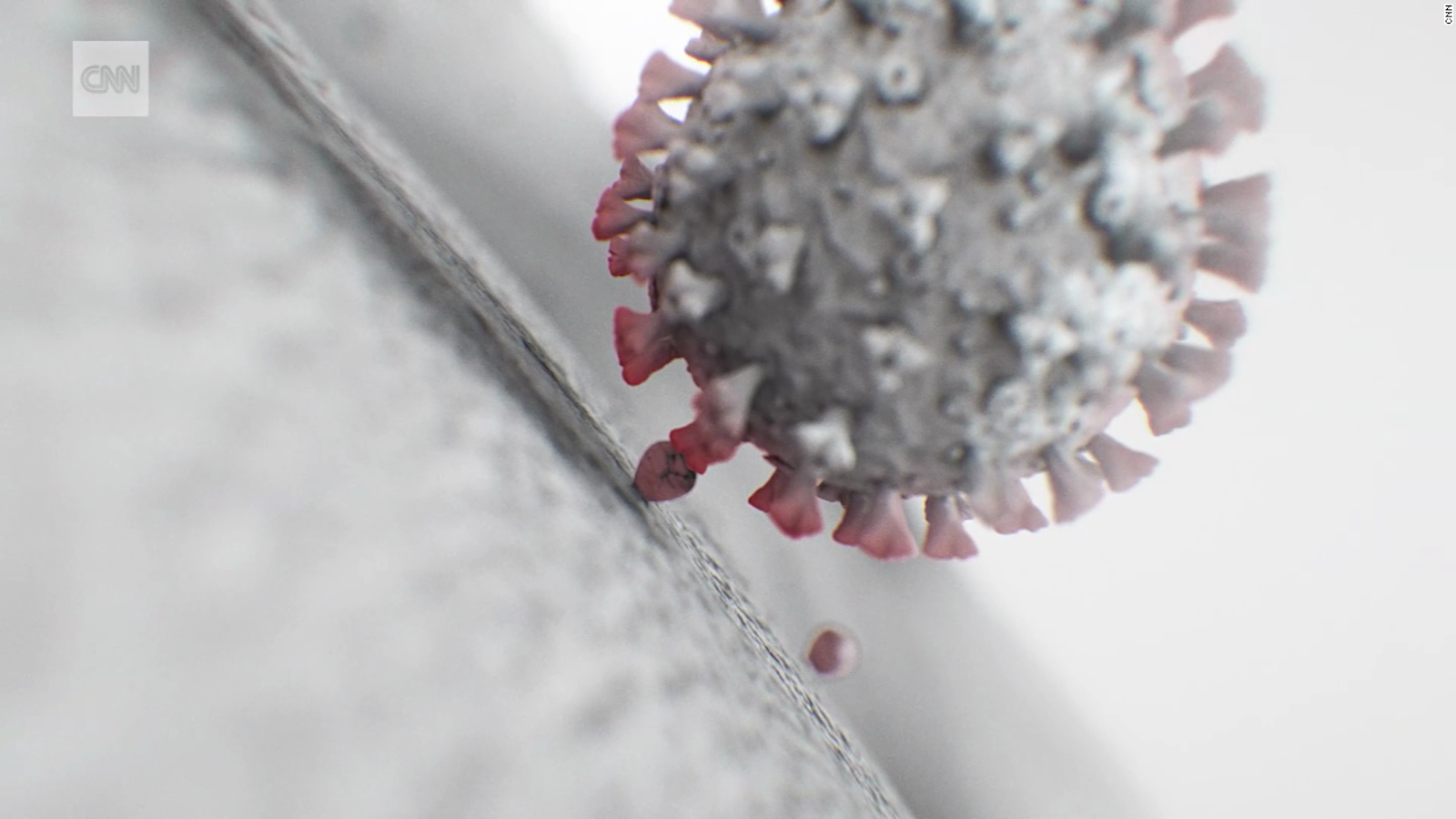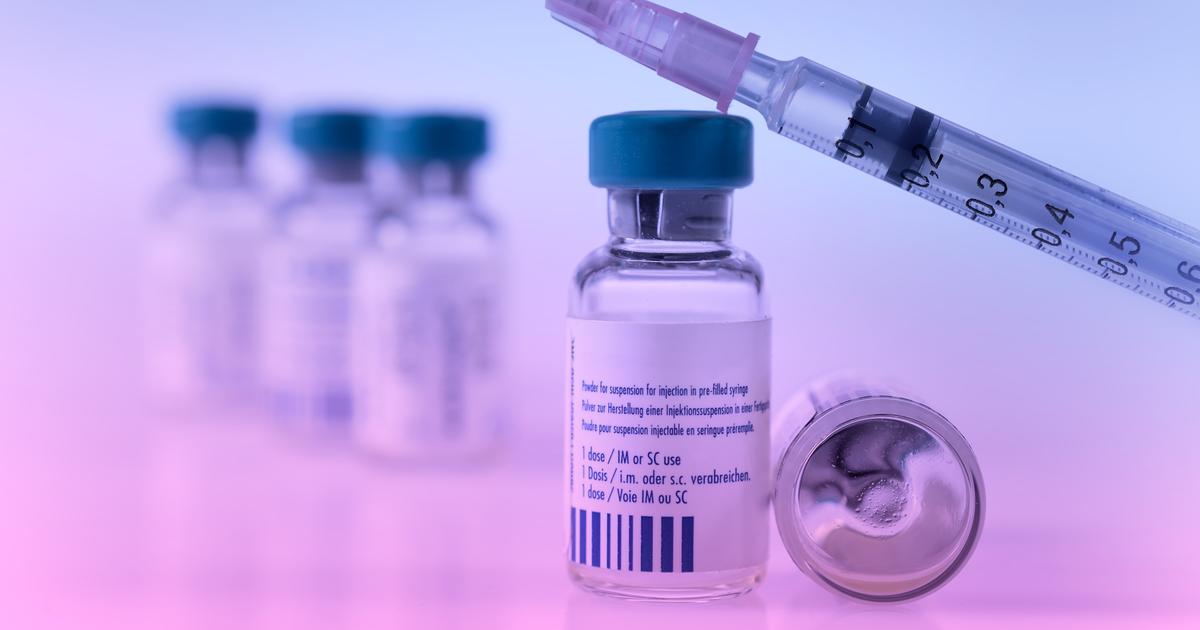What distinguishes the covid-19 BA.2 subvariant from the omicron?
0:54
(CNN) --
There's no denying the numbers: Even with patchy reporting, Covid-19 cases and hospitalizations are on the rise again in the United States.
Covid-19 cases are trending upward in most states and are up more than 50% from the previous week in Washington, Mississippi, Georgia, Maine, Hawaii, South Dakota, Nevada and Montana.
In New York, more than a quarter of the state's population is in a county with a "high" community level of covid-19, where the US Centers for Disease Control and Prevention (CDC, for its acronym in English) recommend the use of masks in closed places.
The average number of daily hospitalizations increased 10% from last week, according to data compiled by the US Department of Health and Human Services (HHS).
The culprit this time appears to be a derivative of the BA.2 omicron subvariant, called BA.2,12.1, which was first flagged by New York state health officials in April.
The BA.2,12.1 subvariant, which is growing 25% faster than its main virus, BA.2, accounts for nearly 37% of all COVID-19 cases in the US, according to new estimates from the CDC.
advertising
The BA.2 subvariant caused approximately 62% of all COVID-19 cases last week, up from 70% the previous week.
Medical expert explains what is safe to do as cases of the BA.2 subvariant of the coronavirus increase
The new subvariants of the coronavirus: XD, XE and XF 2:21
The United States and South Africa face faster new coronavirus variants
BA.2,12.1 is not the only branch of the omicron that scientists are looking at.
After weeks of falling cases, South Africa's Covid-19 numbers have risen sharply in the past two weeks.
Test positivity and hospitalizations have also emerged as scientists have noted that two relatively new subvariants, BA.4 and BA.5, dominate transmission in that country.
Together, they accounted for almost 60% of all new Covid-19 cases at the end of April, according to the South African National Institute of Communicable Diseases.
These new subvariants of omicron are spreading throughout the world.
BA.4 sequences have been reported in 15 countries and 10 US states, while BA.5 has been detected in 13 countries and five US states, according to the Outbreak.info website, which maintains a coalition of academic research centers and is funded by the National Institutes of Health.
Like BA.2,12.1, BA.4 and BA.5 have a growth advantage over BA.2.
New versions of the omicron variant outperform the BA.2 subvariant
This is what we know about BA.2, new omicron subvariant 0:41
Subvariants of the omicron escape immunity
A new preliminary study, published before the peer review, points out why BA.4 and BA.5 are gaining traction.
These variants, says the study, can escape antibodies generated by previous infections caused by the first omicron virus, BA.1, the variant responsible for the huge wave of infections that hit many countries in December and January.
They can also escape antibodies in people who have been vaccinated and had advanced BA.1 infections, although this happened to a lesser degree than in people who just got infected.
Researchers in South Africa tested the ability of antibodies in blood to inactivate BA.4 and BA.5 viruses in a laboratory.
In people who were not vaccinated but recently recovered from a BA.1 subvariant infection, they saw a more than sevenfold decrease in the ability of their antibodies to neutralize BA.4 and BA.5 viruses.
In people who had been vaccinated but recently had an advanced BA.1 infection, the drop was smaller, about three times less.
For comparison, the World Health Organization uses an eight-fold reduction in neutralization as the threshold for loss of protection that requires a seasonal influenza vaccine update.
The study results led the researchers to write that "BA.4 and BA.5 have the potential to spark a new wave of infection," making covid-19 vaccines and booster doses crucial for stop the next wave.
"Our takeaways from this are, first of all, that omicron by itself is not a great 'vaccine,' is it?" said Alex Sigal, a virologist at the African Health Research Institute who led the study.
"Just because you were infected doesn't mean you have much protection against what comes next."
Dr. Eric Topol, cardiologist, founder and director of the Scripps Research Translational Institute, praised the research, noting that this lab was also the first to characterize the first omicron variant: "They've been top notch all the way through the pandemic".
Overall, he said, the finding was not good news.
Even people who recovered from a COVID-19 infection in December or January can be re-infected with these new subvariants.
"That decreased immune escape or immune evasion was pronounced in people who were not vaccinated," Topol said, noting that only 1 in 3 people in South Africa have been vaccinated against Covid-19.
For those who are vaccinated, “those people aren't too bad either, but they also have to deal with BA.4 and BA.5 with a less robust neutralizing antibody response,” he said.
"Mutations in BA.4 and BA.5 are becoming a challenge to our immune response."
Only a few dozen sequences of these viruses have been reported in the US and Canada.
Researchers say it's too early to tell whether the BA.4 or BA.5 will take off in the United States.
It wouldn't be surprising if the virus took off in the United States, said Andy Pekosz, a virologist and professor of molecular microbiology and immunology at Johns Hopkins University.
"We've seen this over and over again. When a variant becomes dominant in another country, it eventually ends up here in the US and spreads globally," Pekosz said.
In the meantime, Topol said, we have to deal with our own sublineage: BA.2,12.1.
"You can simulate the problems in BA.4 and BA.5," Topol said.
"We don't know yet because there isn't a study like this from the Sigal lab."
Beijing tests 20 million people for covid-19, amid a "fast and furious" outbreak of the omicron variant
What are the differences between omicron and BA.2?
Dr. Huerta responds 4:14
Shared mutation between variants
BA.4 and BA.5 and BA.2,12.1 viruses have mutations at location 452 of their genomes.
This region encodes a part of the virus receptor binding domain, the part of the virus that attaches to a gate on the outside of our cells.
The delta variant and a few others have detected mutations at this location.
Researchers think the changes there help the virus stick more closely to our cells and hide from front-line immune defenders called antibodies that try to stop the virus from invading our cells.
"That can make it transmit better perhaps between our cells as well," Sigal said.
The BA.4 and BA.5 variants also have changes at location 486, which is a bit disconcerting because previous viruses that changed at this location didn't work well.
They vanished.
"All of a sudden this kind of variant does it. So we don't know what that does," Sigal said.
"I suspect this is a large escape mutation," meaning it helps the virus hide from our immune system."
Scientists have begun work to try to better understand the BA.2,12.1 subvariant, which has been detected in 22 countries, although most of the sequences come from the United States.
Pekosz said he has been growing copies of BA.2,12.1 in his lab and recently sent samples of the virus to other research groups for study.
He said scientists have just started talking about experiments they want to do to try to answer two key questions: How fast does it copy itself, and how well does it escape our immunity?
Before the SARS-CoV-2 virus, scientists thought that coronaviruses didn't change much.
Pekosz said that looking back, we didn't know that we didn't know.
As long as the virus continues to find hosts to infect, it will continue to evolve.
"This virus has shown that it mutates slowly, but when it started to have good mutations, they just kept coming and coming and coming," he said.
Covid-19









